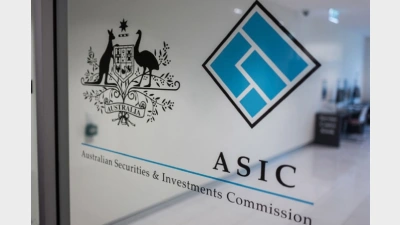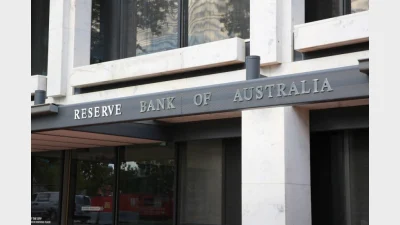Opportunities in emerging market bonds



HSBC argues that 2012 represented a strong year for emerging market bonds and may act as a pointer with respect to 2013.
Emerging market debt had a stellar year in 2012, returning 18.5 per cent (as measured by the JP Morgan Emerging Market Bond Index) through the 12-month period, as investors sought higher yields in a low interest environment.
Global investors poured in a record US$94.1 billion into the asset class last year, compared to US$44.8 billion in 2011.
The increased flows have come amid growing investor demand and recognition of fundamentals. Emerging debt markets have grown steadily over the past decade.
Their credit has strengthened while fundamentals in developed markets have deteriorated.
The total investment grade universe was worth approximately US$2-3 trillion, with 80 per cent of the emerging markets’ corporate issuance rated investment grade in 20121.
This offered investors exposure to a fast-growing, relatively liquid asset class.
“Now most investors are convinced of the quality of the emerging market debt asset class and this gives emerging market debt a stable asset base,” said Guillermo Osses, head of emerging market debt portfolio management at HSBC Global Asset Management.
HSBC Global Asset Management manages around US$15 billion in global emerging market debt strategies, including hard currency debt, total return, local debt and corporate debt for investors with different risk return prowwfiles and investment mandates.
The strong performance of the asset class and demand for emerging market debt has been matched by a healthy supply of new issuance.
Emerging market hard currency debt new issuance scaled a new high in 2012 at US$411 billion, with corporates and quasi-sovereigns making up US$329 billion of that tally while sovereign bonds accounted for the rest.
Near-term consolidation to bring benefits
Following the robust rally in 2012, valuations across the emerging markets asset class have become stretched.
At the end of 2012, over 70 per cent of emerging market sovereign countries were trading at spread levels below 200 basis points, compared to less than 7 per cent at the end of 2011.
Currency technicals have also weakened, owing to the build-up of significant long emerging market currencies and short US dollar positions.
The local debt space has thus become crowded and vulnerable to correction, as currency positions are liquid and easy to unwind
“This can actually be a good thing,” says Osses, who explains that a short-term correction will deliver two benefits: making valuations cheaper and correcting investor perception on the risk return proposition of this asset class.
“Even though this asset class is solid from a credit perspective, it is difficult to think of it as a risk-free asset, which seems to be the attitude of some investors who entered the market last year.
"We are waiting for the volatility-averse investors to exit, so that we could add exposure at more attractive prices,” Osses said.
Emerging market corporate bonds offer value
Within emerging market debt universe, Osses prefers corporate debt to sovereign debt. In fact, emerging market corporates compare favorably with US corporate debt, offering higher yields for the same credit ratings and less leverage.
This might be in part due to lack of investors’ familiarity with this segment of the asset class and also because international investors may face different constraints when investing overseas.
The emerging markets corporate bond index has a higher average credit quality than the emerging markets external debt index, with over 75 per cent of asset class rated as investment grade.1
Emerging market corporate bond issuance is likely to remain high in 2013 as issuers take advantage of low rates and investors’ seemingly insatiable appetite for bonds.
The asset class has increased over 300 per cent since 2005 as compared with an increase of 63 per cent for emerging markets sovereigns.1
The total amount of debt outstanding of the emerging markets’ corporate bond market has increased to over US$1 trillion from only $340 billion at the end of 2005.1
At current growth rates, the emerging markets corporate universe is expected to surpass US high yield in 2014.

Defensive positioning within HSBC emerging market debt portfolios
At present, HSBC Global Asset Management maintains a defensive position in its emerging market debt portfolio, in light of stretched valuations for the asset class.
Portfolio strategy now focuses on accumulating high quality corporates and quasi-sovereign issues in countries that offer relatively attractive spreads compared to sovereign bonds.
Within the total return strategy, the fund house also has short positions, to reflect its defensive view.
Osses says that returns for the asset class in 2013 are unlikely to touch the high double-digit numbers scaled in 2012, but will still be attractive on a relative basis, as investors continue their search for yield.
Global macro risks, such as discussions on the US fiscal debt and political and economic uncertainties in Europe, will continue to affect the asset class.
However, policy support by governments, including looser monetary policy, will continue to sustain growth in emerging markets and support their currencies.
Investment expertise matters
While country and credit selection, along with securities selection, accounts for much of the emerging debt portfolio’s performance, the sophistication of the technical tools used to calibrate risk is an increasingly important component to deliver returns and has helped HSBC’s strategies outperform peers in the asset class.
“Back in the late 1990s and early 2000s, most people running strategies had a macro-economics background, but now we see increasingly more people with technical backgrounds managing these strategies,” Osses said.
“This highlights how much the tools and techniques for asset selection and portfolio construction have developed.”

Emerging market debt continues to offer a myriad of opportunities
Despite short-term concerns on valuations, the emerging market debt asset class offers attractive opportunities, especially for seasoned investors who can effectively incorporate their best ideas into portfolios that calibrate risk and return.
The improvement in credit fundamentals, and the strong migration towards investment grade status for several players in the emerging market universe, is likely to sustain demand for the asset class, as well as make it an attractive destination for investors. SR
1. HSBC Global Asset Management, JP Morgan, Bloomberg, data as at 31 December 2012.
Recommended for you
Ethical super fund Australian Ethical has announced the appointment of Anthony Lane as chief operating officer.
The structural shift towards active ETFs will reshape the asset management industry, according to McKinsey, and financial advisers will be a key group for managers to focus their distribution.
ASIC has warned that practices across the $200 billion private credit market are inconsistent and, in some cases, require serious improvement.
A surge in electricity prices has driven the monthly Consumer Price Index to its highest level in a year, exceeding forecasts.










